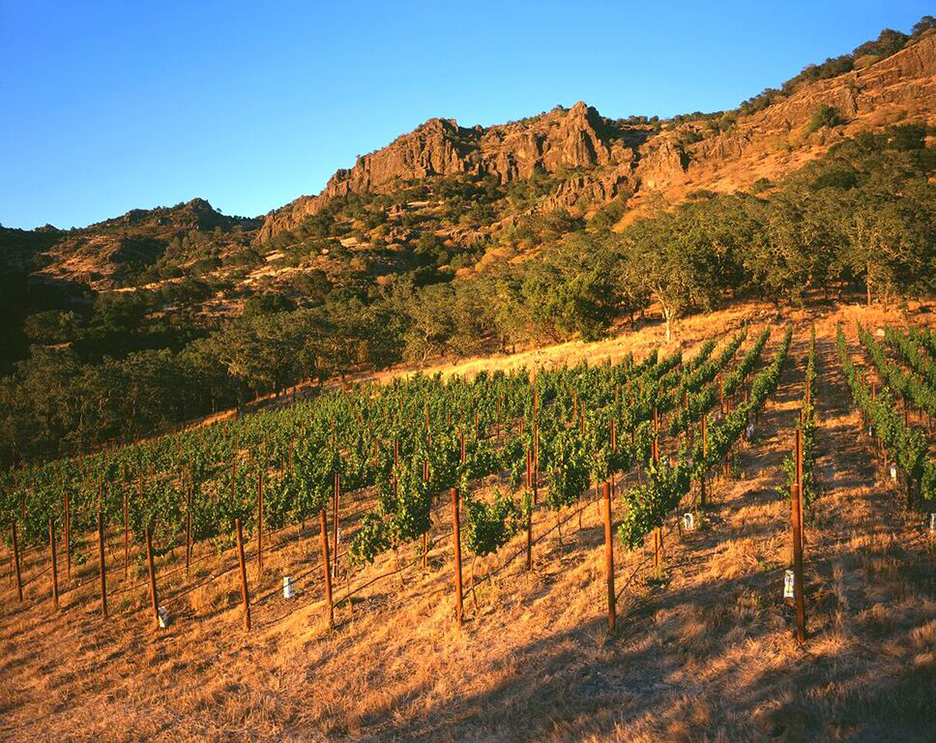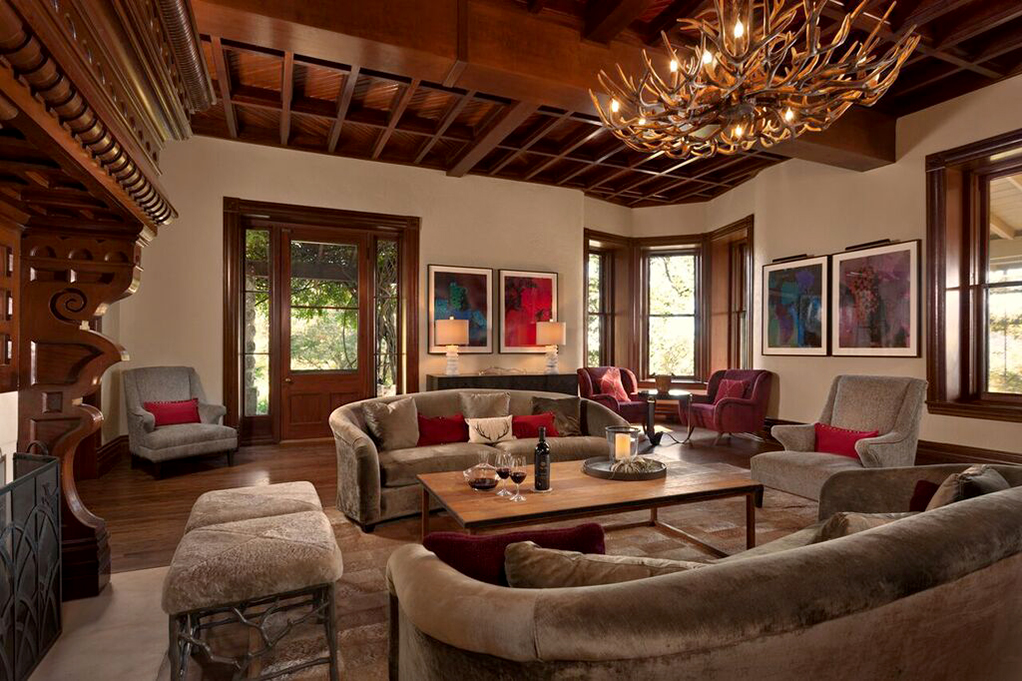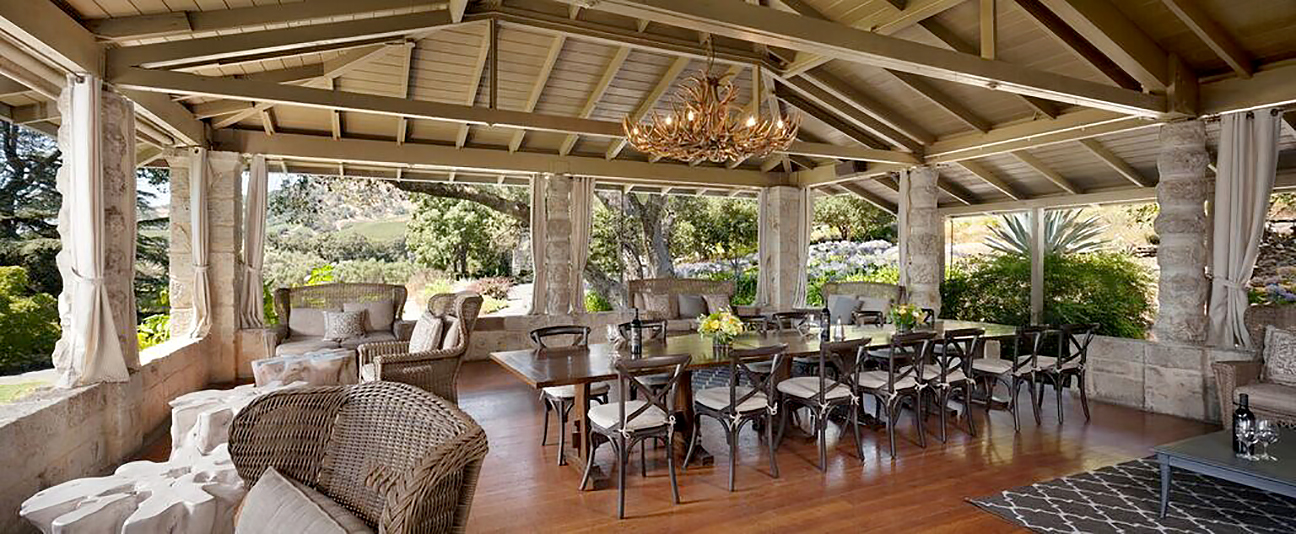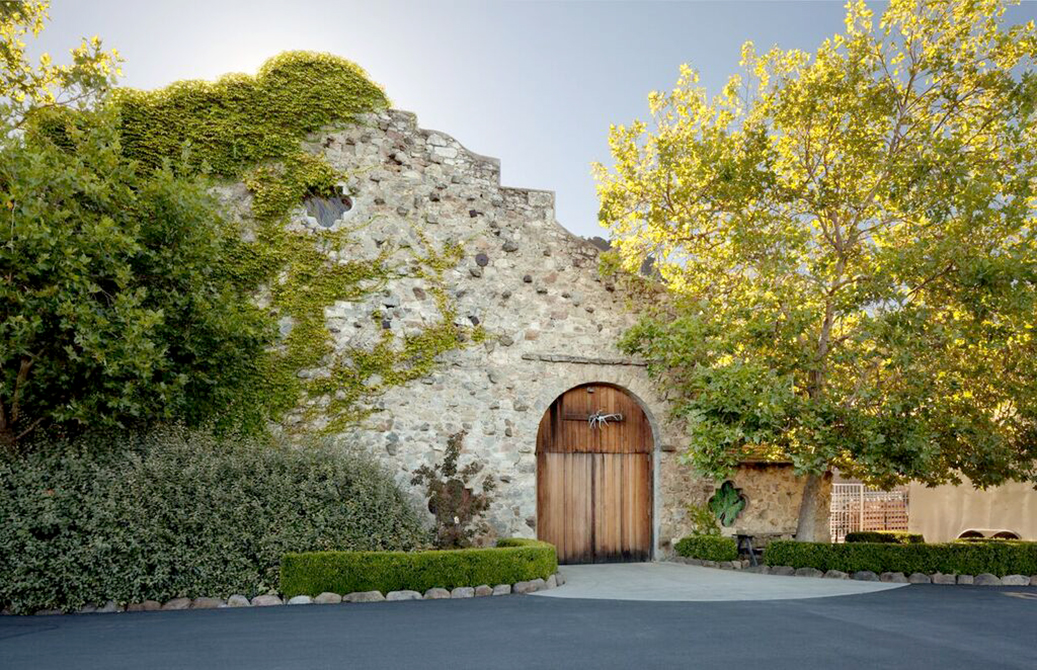Deep ruby color; black cherry, black plum, black fruits, violets, clove on the nose; blackberry, blueberry, black cherry, blackcurrant, black plum, dark chocolate, mint, oak on the palate.
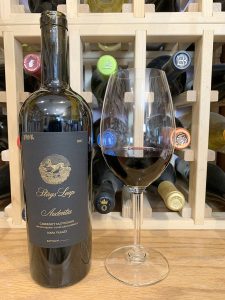
Dry; fine-grained tannins; wonderfully integrated, fresh acidity. Medium-plus body. Concentrated ripe, dark fruits with depth and lingering finish. Rich, robust, savory, powerful; at the same time, smooth and delicious in the mouth. Blend of 82% cabernet sauvignon, 9% petite sirah, 9% petit verdot. Aged in French oak, 69% new, for 20 months.
Grapes hand-picked and hand-sorted. Fermented in combination of small, closed tanks and 132-gallon oak barrels (puncheons), to foster concentration and soften tannins. Lots undergo a lengthy, almost month-long, maceration period which adds color, tannin and complexity of flavors to the cabernet sauvignon and petite sirah. 14.3% ABV
Grapes sourced from Stags’ Leap estate vineyards from vines 25-38 years old. Petite sirah sourced exclusively from block 9; the winery notes the block is “long known as one of the winery’s highest-performing blocks that delivers each year with deep blue and red fruit we liken to Cabernet Sauvignon, while the Petit Verdot, known for its color, floral flavor intensity and tannin profile, is also sourced from our estate vines. The combination of these varietals results in a blend that’s both powerful and concentrated, balanced and elegant.”
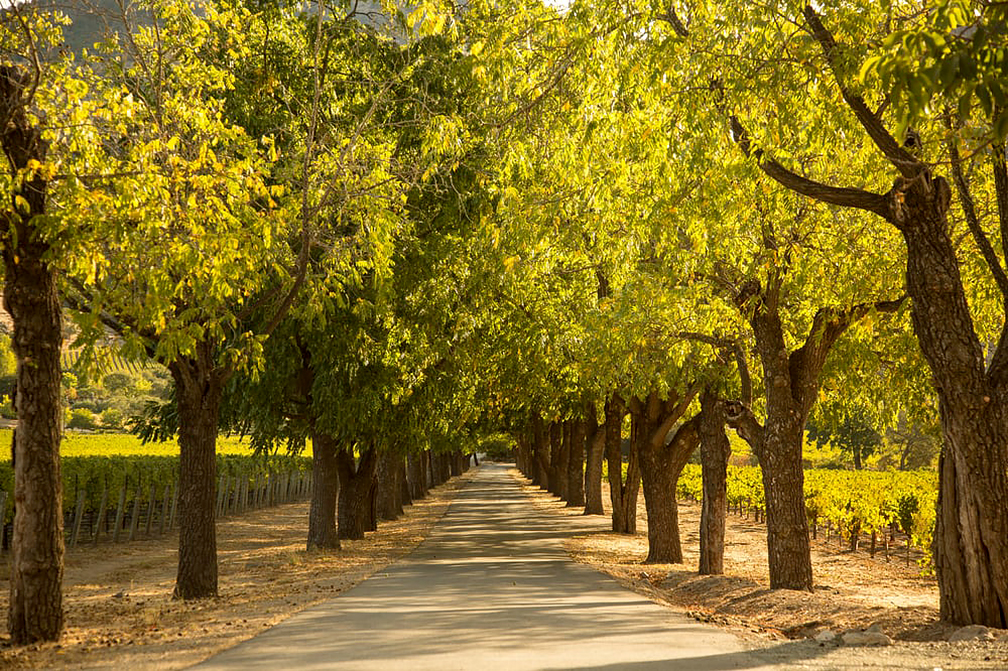
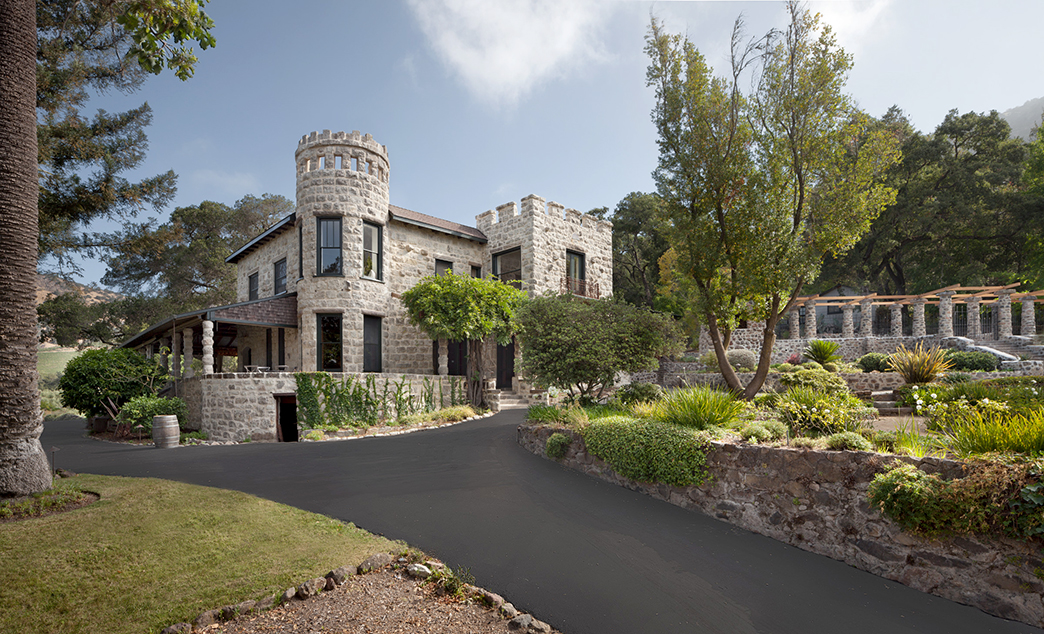
Stags’ Leap is one of California’s oldest wineries. Horace Chase partnered with his uncle, W.W. Thompson, to found the estate on land where grapes has been planted by T.L. Grigsby in the 1880s. The manor house was built in 1890 and the first vintage was produced in 1893. The name “Audentia” is a tribute to Chase. His family motto was “Sed contra audentior ito”—Latin for “Always push harder.”
The Chase family got the Stags Leap name from a native Wappo legend of a stag leaping to escape Native American hunters. The mountains behind the property on the eastern side are known as the Stags Leap Palisades. While wine production was interrupted for extended periods—especially during Prohibition—wine grapes have been grown on the property continuously since its founding.
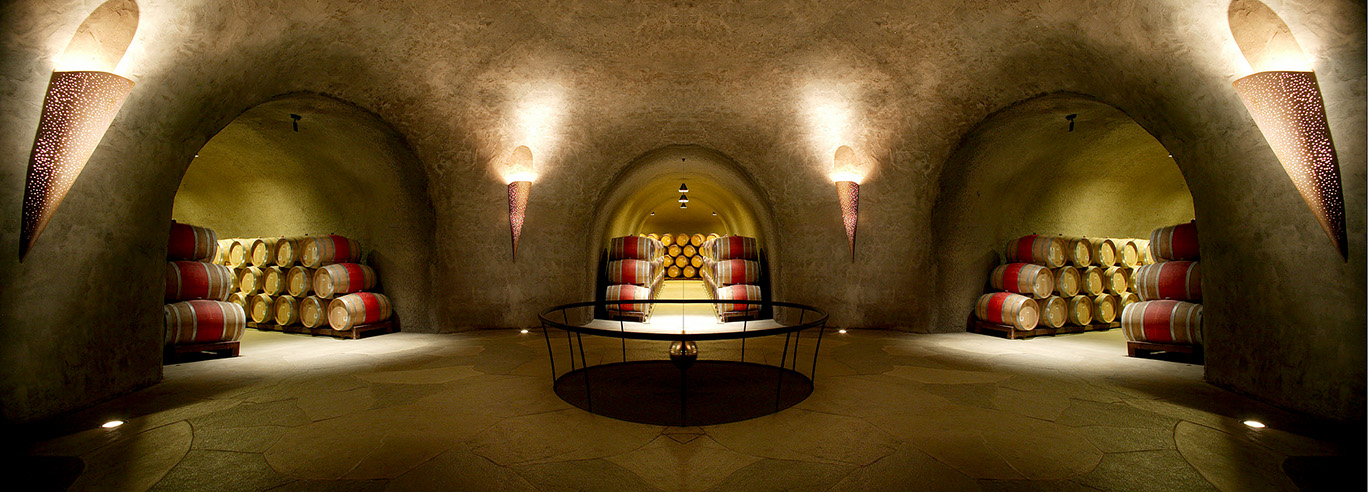
After 64 years of non-wine making (while still growing grapes for others), Carl Doumani resumed wine production at Stags’ Leap in 1972. In 2009, Christophe Paubert joined Stags’ Leap as head winemaker. Today, Stags’ Leap is owned by Treasury Wine Estates, a major international player in the wine world, making wine in 12 countries, selling more than 35 million cases of wine a year, generating sales of more than $2 billion. Labels you may recognize beyond Stags’ Leap include Sterling Vineyards, Beaulieu Vineyard, Beringer, Chateau St. Jean, Greg Norman Estates, Lindeman’s, Wolf Blass, and Treasury’s flagship—Penfolds.
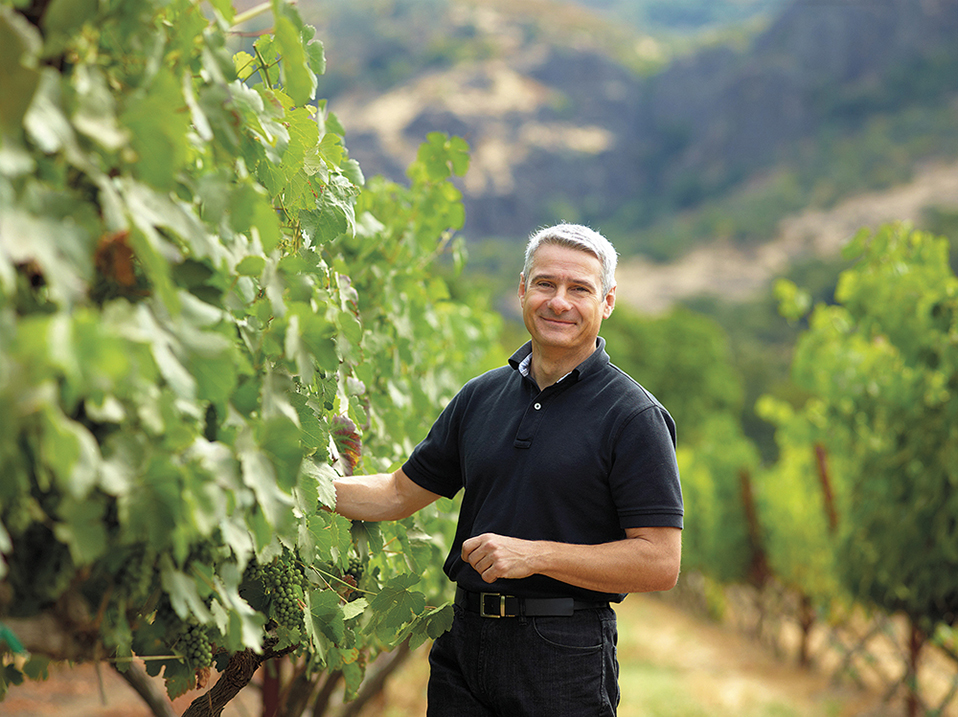
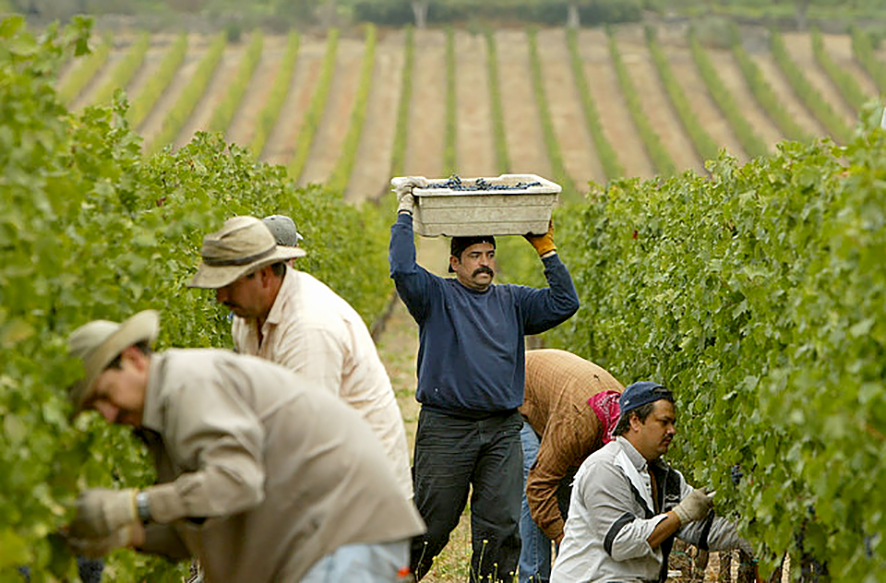
There also is a Stag’s Leap winery, notice the placement of the the apostrophe. That winery won the Judgment of Paris in 1976 and now is owned by Ste. Michelle Wine Estate and Marchesi Antinori and is not connected to Stags’ Leap that made this wine. Both wineries are in the Stags Leap (note: no apostrophe) district of Napa.
Stags’ Leap Winery Audentia Cabernet Sauvignon 2017 is rich, powerful, sensual wine that also has a soft side with fine-grained tannins and complementing acidity. Layer upon layer of dark fruit flavors. Fresh, muscular, balanced. Classic wine. Pair with range of beef dishes, grilled, broiled, braised, barbecued; lamb; wild game—venison, boar; roasted chicken. Cheese—mature, hard cheese; pecorino-style sheep’s and goat’s milk cheese; aged cheddar; aged gouda; comté; brie. $180-200
